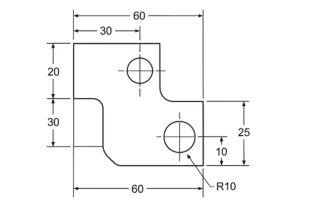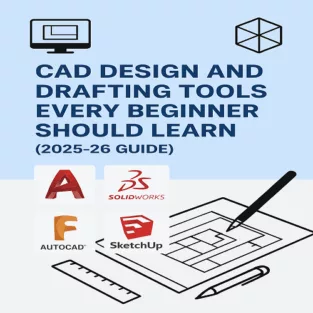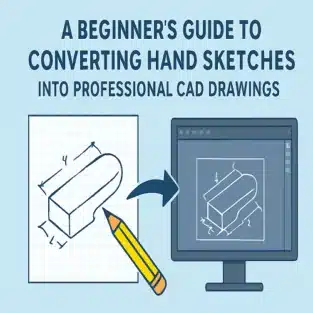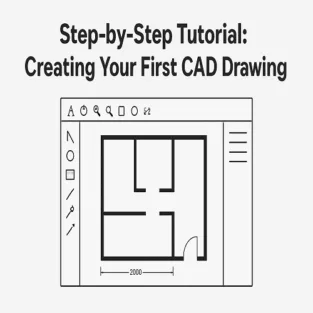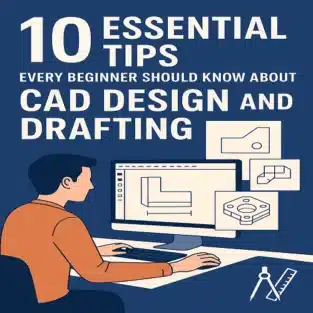Electrical systems are the backbone of modern buildings, industries, and infrastructure projects. From residential homes to large commercial complexes, every electrical installation must be carefully planned, documented, and executed. This is where an Electrical Drafting Service plays a vital role. For beginners, understanding electrical drafting may seem complex, but with the right explanation, it becomes much easier to grasp.
This guide explains Electrical Drafting Services step by step, covering what they are, why they matter, the drafting process, and how beginners can benefit from professional electrical drafting.
What Is an Electrical Drafting Service?
An Electrical Drafting Service involves creating detailed technical drawings that visually represent electrical systems within a structure. These drawings show the layout of wiring, lighting systems, power outlets, control panels, switchboards, and safety devices such as circuit breakers and grounding systems.
Electrical drafting acts as a communication bridge between engineers, electricians, contractors, and inspectors. Without accurate drafting, electrical installations can lead to errors, safety hazards, and costly rework.
Why Electrical Drafting Services Are Important
Electrical drafting is not just about drawing lines and symbols—it ensures safety, efficiency, and compliance.
Key benefits include:
- Clear visualization of electrical layouts
- Improved coordination between teams
- Compliance with local electrical codes and standards
- Reduced installation errors
- Faster approvals and inspections
- Accurate cost estimation and material planning
For beginners, a professional Electrical Drafting Service simplifies complex electrical concepts into readable and standardized drawings.
Common Types of Electrical Drafting Drawings
Before diving into the step-by-step process, it’s important to understand the types of drawings created through electrical drafting:
- Lighting Layout Drawings
- Power and Socket Layouts
- Single Line Diagrams (SLD)
- Wiring and Cable Routing Drawings
- Panel Schedule Drawings
- Earthing and Grounding Layouts
- Fire Alarm and Low-Voltage System Drawings
Each drawing serves a specific purpose during installation, inspection, and maintenance.
Step-by-Step Electrical Drafting Process for Beginners
Step 1: Understanding Project Requirements
The first step in any Electrical Drafting Service is gathering project information. This includes:
- Architectural and structural drawings
- Client requirements
- Load calculations
- Applicable electrical codes and standards
For beginners, this stage helps build a strong foundation by understanding how electrical systems integrate with the building design.
Step 2: Reviewing Electrical Standards and Codes
Electrical drafting must follow national and international standards such as IEC, NEC, or local electrical authority guidelines. These standards define:
- Symbol usage
- Line types
- Safety clearances
- Load distribution rules
Following codes ensures that drafted drawings are safe, approved, and legally compliant.
Step 3: Creating Electrical Layout Drawings
At this stage, the drafter begins placing electrical components on the floor plan. This includes:
- Lights
- Switches
- Power points
- Distribution boards
A professional Electrical Drafting Service ensures proper spacing, accessibility, and functionality while keeping the layout clean and readable.
Step 4: Developing Wiring and Circuit Diagrams
Once layouts are approved, wiring diagrams and circuit connections are created. These drawings show:
- Cable routes
- Circuit numbers
- Wire sizes
- Connection points
For beginners, wiring diagrams are essential to understand how power flows throughout the system.
Step 5: Preparing Single Line Diagrams (SLD)
Single Line Diagrams provide a simplified representation of the electrical system using single lines instead of detailed wiring. An SLD includes:
- Power source
- Transformers
- Switchgear
- Distribution panels
This step is critical in any Electrical Drafting Service as it helps engineers analyze load distribution and fault levels.
Step 6: Panel Schedules and Load Calculations
Panel schedules show detailed information about electrical panels, including:
- Circuit numbers
- Connected loads
- Breaker sizes
- Phase distribution
This step ensures electrical balance and prevents overloads, making it especially important for commercial and industrial projects.
Step 7: Final Review and Documentation
The final step includes:
- Cross-checking drawings for accuracy
- Ensuring code compliance
- Coordinating with other disciplines
- Preparing final submission drawings
A professional Electrical Drafting Service delivers error-free documentation ready for construction and approval.
Tools Used in Electrical Drafting Services
Modern electrical drafting relies on advanced software such as:
- AutoCAD Electrical
- Revit MEP
- DraftSight
- MicroStation
These tools help beginners learn standardized drafting techniques while maintaining accuracy and efficiency.
Who Needs Electrical Drafting Services?
An Electrical Drafting Service is essential for:
- Residential builders
- Commercial developers
- Industrial facilities
- Electrical contractors
- Engineers and consultants
- Renovation and retrofit projects
Even small projects benefit from professional drafting to avoid costly electrical mistakes.
Benefits of Outsourcing Electrical Drafting Services
Outsourcing electrical drafting offers several advantages:
- Access to skilled drafting professionals
- Faster project turnaround
- Reduced overhead costs
- High-quality, standardized drawings
- Easy scalability for large projects
For beginners and growing businesses, outsourcing ensures reliable results without investing heavily in in-house resources.
An Electrical Drafting Service is a crucial component of any successful electrical project. From planning and safety to execution and maintenance, electrical drafting ensures that every detail is accurately documented and easy to follow. For beginners, understanding the step-by-step drafting process provides clarity and confidence when working with electrical systems.
Whether you’re planning a small residential project or a large commercial installation, professional Electrical Drafting Services help you achieve precision, safety, and efficiency—right from concept to completion.
What is an Electrical Drafting Service used for?
An Electrical Drafting Service is used to create accurate drawings that guide electrical installation, inspection, and maintenance of buildings and infrastructure.
Are Electrical Drafting Services required for small projects?
Yes. Even small residential or renovation projects benefit from electrical drafting to ensure safety, proper planning, and compliance with codes.
What is the difference between electrical drafting and electrical design?
Electrical drafting focuses on creating technical drawings based on approved designs, while electrical design involves calculations, planning, and system engineering.
Which software is best for Electrical Drafting Service?
AutoCAD Electrical and Revit MEP are widely used due to their accuracy, industry acceptance, and advanced electrical libraries.
How accurate are professional Electrical Drafting Services?
Professional drafting services deliver highly accurate drawings that reduce errors, rework, and installation delays.
Can Electrical Drafting Services help with approvals?
Yes. Well-prepared electrical drawings improve approval speed from authorities and inspectors.


